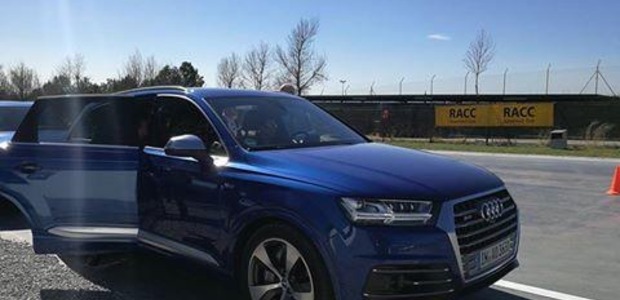advertisement
#MWC2017: Getting future cars connected using cellular network
Vodafone, Huawei and Audi are testing a new technology that involves cellular technology to connect cars to each other, to…

Vodafone, Huawei and Audi are testing a new technology that involves cellular technology to connect cars to each other, to people and to roadside infrastructure, which the companies say will enhance safety and deliver a better driving experience.
“We are currently driving the development of this new technology, known as LTE-V2X which means connecting vehicles (V) to everything (X). Vodafone, and our industry partners are developing LTE-V2X through the standards organisation 3GPP,” Luke Ibbetson, Vodafone Group’s Head of Research and Development and Technology Strategy, said during a live demonstration of the connected car.
The new technology is an aspiration associated with an Intelligent Transportation System (ITS) that promises to bring about a transformational change to driving, vehicle safety and traffic congestion management.
advertisement
With this system, vehicles will be able to become much more aware of both their immediate and surrounding environment. For example, a car which is part of the ITS will be able to tell other cars of its intention to change lane or to signal an emergency stop. The vehicle could also be told the optimal speed to drive in order to avoid traffic congestion.
One of the key communication paths to be used in the ITS is vehicle to vehicle communications. This technology will be based on extensions to the widely used 4G standard commercially deployed around the world.
By building these capabilities on the worldwide 4G standard Vodafone believes that they will be able to ensure safe, reliable communications while still making the most efficient use of radio spectrum and support a smooth transition to 5G.
advertisement
Mr. Ibbetson also added that they had already completed an initial validation of LTE-V2X on a private test track in the UK and were actively developing plans to trial it in Germany.
“Achieving communication between vehicles and infrastructure is an important step that will lead to full automation of cars after 2020. We are excited to be trialing the technology that will bring new 5G capabilities to vehicles enabling safer and smarter driving for all,” he added.
As part of the 4G evolution towards 5G, the new C-V2X technology also enables rapid exchange of information between vehicles, other road users and infrastructure promising to bring about a transformational change to driving, vehicle safety, traffic management and road efficiency.
advertisement
This latest development follows the successful live trial by Huawei, Vodafone and Bosch of a 5.9 GHz C-V2X connection purely between vehicles on the A9 motorway in Germany in February 2017.
The C-V2X technology on connected cars relies on four key scenarios of how connected vehicles can enhance driving this includes the See through which basically means connected cars can see a video feed from a vehicle in front in situations where it will help them to have visibility of other traffic, upcoming entry roads or other issues to negotiate.
The second part is Traffic light warning, this is where the driver will be alerted if a traffic light is about to change enabling them to better anticipate when to slow down. The third is a Pedestrian warning which is basically mobile connectivity that gets to alert vehicles to a pedestrian crossing the road ahead, even before they are visible to sensors or the driver.
And finally the technology will be fit with an algorithm which determines if there is a risk from other connected vehicles which sudden braking or changing lanes and will sound an alarm to alert the driver.
For this project Vodafone played a part in installing a powerful mobile radio network for data transmission covering the race track while Huawei supplied the mobile radio modules installed in the cars and the required communication technology update to base stations.